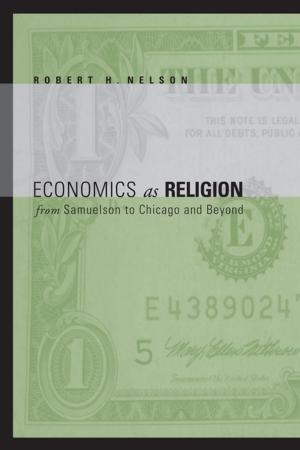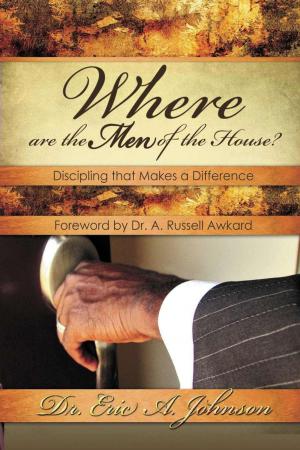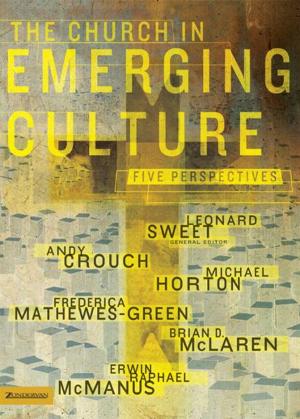The Glorious Church
Nonfiction, Religion & Spirituality, Reference, Eschatology, Christianity, Church| Author: | David Huston | ISBN: | 9781311871145 |
| Publisher: | David Huston | Publication: | July 8, 2015 |
| Imprint: | Smashwords Edition | Language: | English |
| Author: | David Huston |
| ISBN: | 9781311871145 |
| Publisher: | David Huston |
| Publication: | July 8, 2015 |
| Imprint: | Smashwords Edition |
| Language: | English |
What is the future of the Church and what will she look like? Can we know? Can we visualize her? Is it possible to describe the Church of the future? The answer is a resounding “yes!” And the reason we can say this is because the Bible describes the Church Jesus will present to Himself when He comes. It says He will come for a “glorious church, not having spot or wrinkle or any such thing, but that she should be holy and without blemish” (Ephesians 5:27). This is our future. It is divinely settled and unconditionally determined to come to pass.
But what does the Bible mean by the term “glorious Church?” How do we define it? How do we describe it? How do we really know if we are approaching it in our own experience within the body of Christ? We may convince ourselves that our local assembly is more glorious than the one down the highway, but is this an accurate way of assessing our level of glory? Wouldn’t it be more logical to evaluate a local assembly’s glory by comparing it to the glorious Church of the New Testament?
As we read through the Epistles and the book of Acts, we see the original church pattern established by Jesus. The Scriptures give us no basis for thinking that He ever intended for this pattern to be altered or “improved upon” by those who came along after the original apostles. The pattern Jesus established for His Church was to endure until the day of His coming. During the past 1900 years, the original apostolic pattern has been distorted by the doctrinal, structural, and ministerial errors of a profusion of false teachers. Sadly, many sincere believers have uncritically accepted these errors resulting in a misshapen and often unproductive body. Even though much has been restored to date, it nevertheless remains impossible to accurately envision the glorious Church Jesus established by looking at the Church as it exists today. This means that we cannot know if we have a “glorious church” by comparing ourselves among ourselves. The only way to know—the only way to see the Church in its future state — is to look back to the original Church as described in the New Testament. The original is the pattern for the future.
Why is it important for us to accurately envision the glorious Church? The reason is simple: Jesus did not say that we would build His Church — He said that He would build it. The only Church that will prevail is the one He builds. We are His fellow-workers, but He is the Ultimate Builder. He owns the Church because He purchased it with His own blood. He designed it, He selects the materials for it, and He directs its construction. All attempts to build His Church without knowing how He envisions it are like building a house without looking at the blueprints. As the psalmist declared, “Unless the LORD builds the house, they labor in vain who build it” (Psalms 127:1). The time is too short for vain laboring. We must have accurate vision.
In contemplating where to begin, we decided on the following scenario: Imagine that God has personally invited you to obey His wonderful plan of salvation and you have responded with sincere and appreciative obedience. You don’t know any other Christians, and you know nothing about any kind of church, church service, or church organization. Having provided you with a copy of His Word, God then asks you to describe His eternal purpose, the purpose of His Church, and how the localized expressions of His Church should be structured.
What you are about to read is a contemporary interview with Paul, the bondservant and apostle of Jesus Christ. We acknowledge that we have taken a great liberty in presenting our ideas in this manner, running the risk that some may think us presumptuous, putting words in the mouth of the great apostle. We simply ask the reader to accept this interview format as no more than a useful literary device, enabling us to discuss or explain important biblical concepts in an interesting way.
What is the future of the Church and what will she look like? Can we know? Can we visualize her? Is it possible to describe the Church of the future? The answer is a resounding “yes!” And the reason we can say this is because the Bible describes the Church Jesus will present to Himself when He comes. It says He will come for a “glorious church, not having spot or wrinkle or any such thing, but that she should be holy and without blemish” (Ephesians 5:27). This is our future. It is divinely settled and unconditionally determined to come to pass.
But what does the Bible mean by the term “glorious Church?” How do we define it? How do we describe it? How do we really know if we are approaching it in our own experience within the body of Christ? We may convince ourselves that our local assembly is more glorious than the one down the highway, but is this an accurate way of assessing our level of glory? Wouldn’t it be more logical to evaluate a local assembly’s glory by comparing it to the glorious Church of the New Testament?
As we read through the Epistles and the book of Acts, we see the original church pattern established by Jesus. The Scriptures give us no basis for thinking that He ever intended for this pattern to be altered or “improved upon” by those who came along after the original apostles. The pattern Jesus established for His Church was to endure until the day of His coming. During the past 1900 years, the original apostolic pattern has been distorted by the doctrinal, structural, and ministerial errors of a profusion of false teachers. Sadly, many sincere believers have uncritically accepted these errors resulting in a misshapen and often unproductive body. Even though much has been restored to date, it nevertheless remains impossible to accurately envision the glorious Church Jesus established by looking at the Church as it exists today. This means that we cannot know if we have a “glorious church” by comparing ourselves among ourselves. The only way to know—the only way to see the Church in its future state — is to look back to the original Church as described in the New Testament. The original is the pattern for the future.
Why is it important for us to accurately envision the glorious Church? The reason is simple: Jesus did not say that we would build His Church — He said that He would build it. The only Church that will prevail is the one He builds. We are His fellow-workers, but He is the Ultimate Builder. He owns the Church because He purchased it with His own blood. He designed it, He selects the materials for it, and He directs its construction. All attempts to build His Church without knowing how He envisions it are like building a house without looking at the blueprints. As the psalmist declared, “Unless the LORD builds the house, they labor in vain who build it” (Psalms 127:1). The time is too short for vain laboring. We must have accurate vision.
In contemplating where to begin, we decided on the following scenario: Imagine that God has personally invited you to obey His wonderful plan of salvation and you have responded with sincere and appreciative obedience. You don’t know any other Christians, and you know nothing about any kind of church, church service, or church organization. Having provided you with a copy of His Word, God then asks you to describe His eternal purpose, the purpose of His Church, and how the localized expressions of His Church should be structured.
What you are about to read is a contemporary interview with Paul, the bondservant and apostle of Jesus Christ. We acknowledge that we have taken a great liberty in presenting our ideas in this manner, running the risk that some may think us presumptuous, putting words in the mouth of the great apostle. We simply ask the reader to accept this interview format as no more than a useful literary device, enabling us to discuss or explain important biblical concepts in an interesting way.















